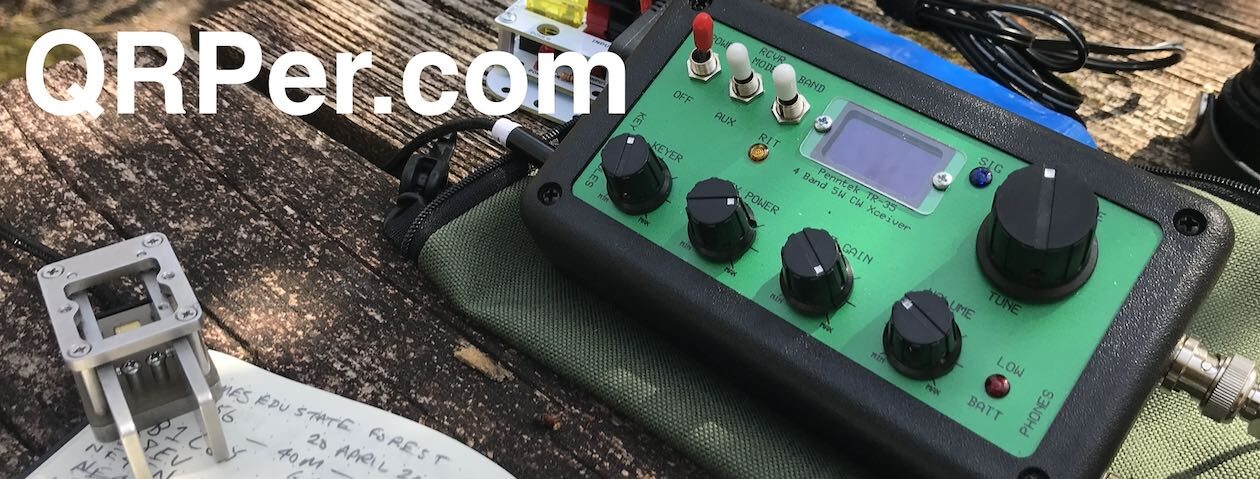by Vince (VE6LK)
Have you ever thought about your journey into learning CW? Many of us learned the “wrong” way, whatever that means. But along the way we’ve gained some smarts about how learning worked -for us- and from that you probably have at least one tip to share with others.
Accordingly, I’ve got one quick question to ask y’all:
If you could tell new CW learners your single best tip to learn CW, what would it be? Please post your response in the comments.

Oh, and the top photo shows my first paddle keys. Yes, I did do my CW exam using the one on the left, much to the chagrin of my examiner. 20 years later he still ribs me about it.
72 and dit dit,
…Vince
First introduced to the magic of radio by a family member in 1969, Vince has been active in the hobby since 2002. He is an Accredited examiner in Canada and the USA, operates on almost all of the modes, and is continually working on making his CW proficiency suck less. He participates in public service events around Western Canada and is active on the air while glamping, mobile, at home or doing a POTA activation. You can hear him on the Ham Radio Workbench podcast, follow him on Mastodon @VE6LK@Mastodon.hams.social, on Twitter @VE6LK, and view the projects and articles on his website.


Great question Vince! As a longtime CW op (1966) and instructor I have 2 comments. First, take the leap and switch to Iambic mode B. Once you master it you’ll see an amazing improvement in your sending and a dramatic reduction in fatigue. Trust me-it’s worth the fairly minimal effort. Take the letter C-if you’re a ‘slapper’ -where you make 4 movements with thumb and finger to make the letter,with B squeeze keying its basically one movement-just learning when to release your fingers and let it finish the letter. Also your rhythm will dramatically improve . The fatigue factor is big-I constantly see folks just exhausted and with hand cramps with slapping. At age 72 I can work a ragchew or a contest for a long time without having any problems. And you’ll find that your improved fist will get you more contacts (who wants to work a ‘herky-jerky’ op?) and bust through pileups. And-if you’re QRP SOTA or POTA in the cold you’ll have more control. I can provide more materials for practice if folks are interested.
Second-learn to copy ‘behind’. In other words let the word finish and then write it down. Takes practice to use that brain buffer,but you’ll eventually relax and also be much closer to head copy. This will really help you break the all too common panic that many beginners have if they miss a letter. If the other op sends ‘N*me is Joe’, you can fill in ‘name is Joe’ with your mind.
Iambic B and copy behind-your CW life will dramatically improve. And-don’t skimp on cheap 3D printed paddles…enjoy the journey!
I’m with Bill, KR8L on this. Listen, listen, listen, to both good code off the internet and W1AW with noise, and QSOs, at varying speeds so you don’t get in a rut. You don’t have to operate to learn code, you have to learn code to operate, tho.
Having said that, I’ll qualify this with “opinions are like consultants, everyone has one” (I modified that a bit :), but seriously, people learn differently. You need to be aware of the different routes to code proficiency, and find one that works for the way you learn .
Any number of experts may offer advice about what speed, what keying method, yadda yadda, and the experts’ advice may be correct for more people than not, but maybe not you. If something doesn’t work, don’t get discouraged, try something else.
de Scott ka9p
“…but seriously, people learn differently.” Wow, is that ever true! Many years ago I was approached by someone who wanted to learn Morse code. Now, I had originally learned using one of the many wrong methods, so I wasn’t sure of the best way to start, so I decided to begin by introducing letter pairs. I started with A and N. Sitting down with my student, I said, “This is an A” and sent an A. Then I said, “This is an N” and sent an N. He said, “I can’t tell the difference.”
“No, now listen carefully. This is an A. This is an N.”
“I don’t hear any difference. They sound the same to me.”
I guess he had a “tin ear”. It really is true that some people just can’t learn Morse code!